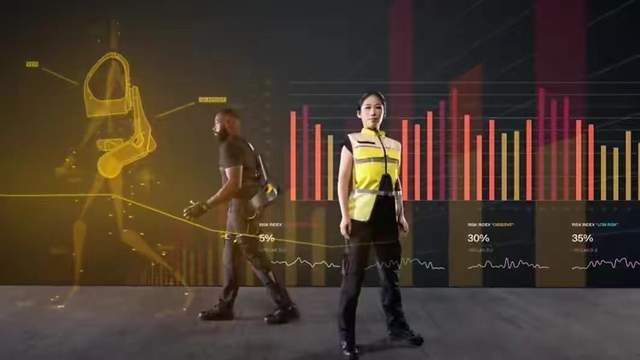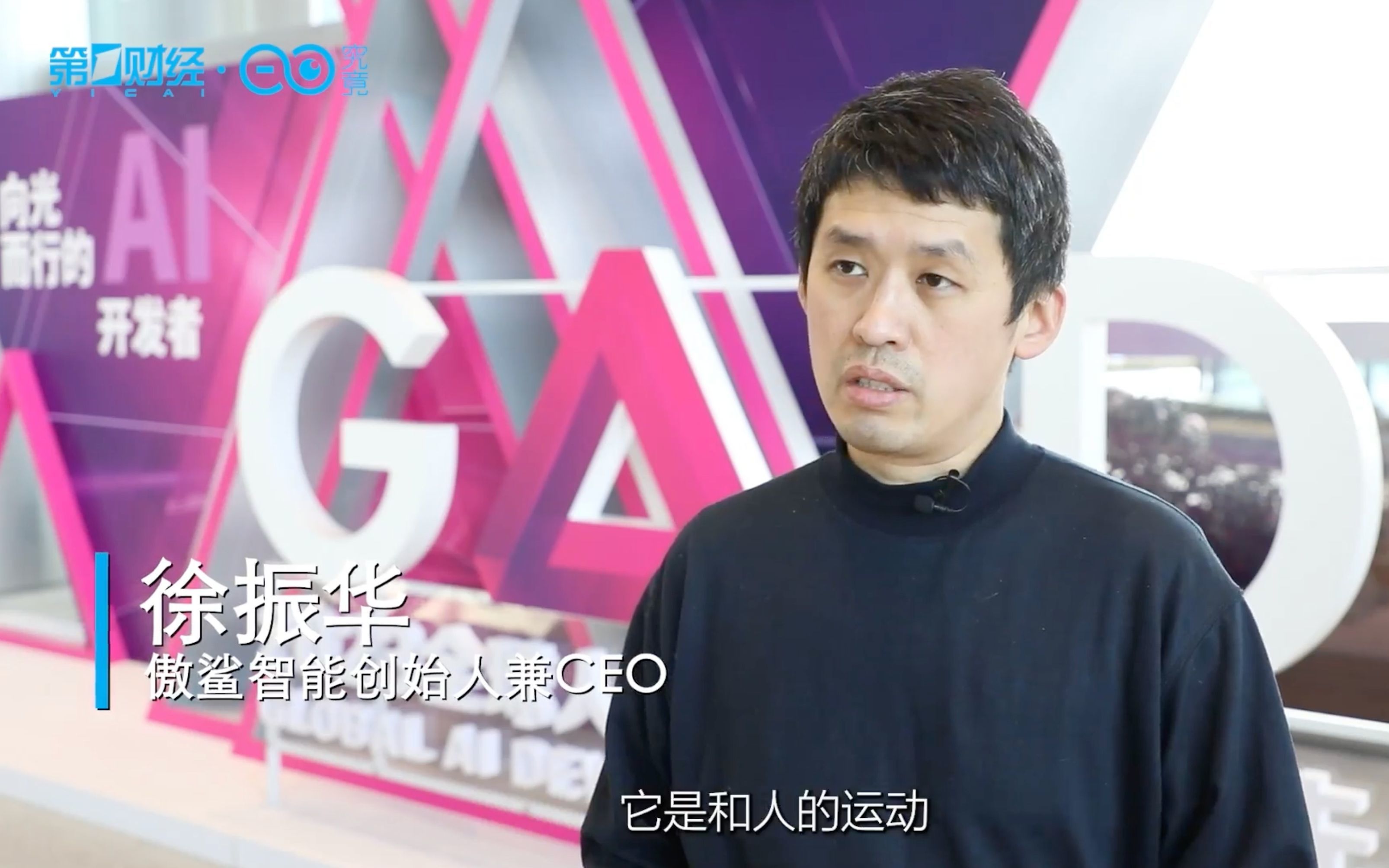News Centerposition:Baoxingwei > News Center > 正文
Exoskeleton robots are facing unprecedented historic opportunities
Edit:Baoxingwei Technology | Time:2023-03-13 11:29 | Number of views:182
According to a market study, in industrial manufacturing scenarios, the use of wearable devices can increase productivity by 8.5%, reduce accidents by 3.5% and improve operational efficiency by 7%. Therefore, wearables have received high attention in the industrial sector: Deloitte reported that 61% of managers listed smart wearables as a key device for strategic deployment in factories, and 54% of managers will increase investment in smart wearables in the next 12 months. According to Yiou preliminary calculation, the output value of global industrial intelligent wearable devices is about 4.1 billion US dollars in 2022, and is expected to reach 8.4 billion US dollars in 2025. At the same time, the "black technology" exoskeleton of industrial wearable devices will also usher in the window of opportunity. 
When talking about the "iflytek Super Brain 2030 Plan", IFlytek revealed that in 2023, it will officially release soft and hard integrated robot products, and orderly launch exoskeleton robot, home service robot and other products in the follow-up. According to a report released by research firm The Insight Partners in January, the global market for exoskeleton robotic systems was worth $1 billion in 2021 and is expected to reach $4.22 billion by 2028. Exoskeleton robots are facing unprecedented historic opportunities. As an institute of technology and industrial innovation, Yiou Think Tank will update and release the 2023 Global Industrial Smart Wearable Device Market Research Report this year. Through in-depth interviews with service providers, active investors, enterprise users, industry experts and scholars of smart wearable device industry chain, Yiou Think Tank will gain insight into the development opportunities and challenges of the industry from a third-party perspective. Try to provide reference and help for the broad industry participants.
01
Smart wearable devices are on the fast track, and exoskeleton robots have great potential
In early 2023, the sci-fi masterpiece The Wandering Earth satisfied the public's imagination of exoskeleton robots. From science fiction to reality, compared with the effect shown in the film, exoskeleton robots have been widely used in industry, transportation, rehabilitation and other industries. At present, the market of exoskeleton robots are mainly divided into two categories, one is mainly used in the field of medical rehabilitation rehabilitation exoskeleton, such as assisting patients to move; The other is the industrial exoskeleton robot, which has stronger load-bearing capacity and precise and efficient operation ability, and can meet the needs of various forms of assistance in heavy manual handling and operation scenarios.
The huge industrial base of manufacturing and logistics industries in the Chinese market has brought huge market demand for exoskeleton robot products.
According to the data disclosed by the National Bureau of Statistics, in recent years, the number of employees in the heavy manual labor industry continues to decrease, and the aging population of the workers continues to increase. Most workers are physically unable to adapt to the production environment and demands of high-speed operation, and the occupational diseases caused by long-term repetitive work further reduce the productivity of workers. Undeniably, with the development of the industrial Internet and the intelligent manufacturing industry, fully automatic equipment has replaced the labor force to a certain extent, but the reality is still far from the ideal state of "black light factory" (namely: the factory is all produced by robots, completely liberated manpower, no longer need to turn on the light). Taking automobile manufacturing as an example, automobile manufacturing is the highest degree of automation in the industrial field at present. The automobile factory involves stamping, sheet metal, welding, gluing, painting and other processes. The manufacturing station at the front end of the assembly line basically realizes automatic operation, but the station at the end of the final assembly line still cannot be completely replaced by automatic equipment, and it still needs manual assembly.
Exoskeleton robots can help solve the human body's lack of endurance and physical strength, and achieve better human-computer interaction and cooperation. Logistics industry is also an application field with great prospect and large market scale. China has the largest express delivery in the world. In 2021, express delivery enterprises supported the circulation of more than 100 billion parcels in China, with an average daily express delivery handling of nearly 300 million pieces. According to the data disclosed by China Post, in the distribution center, the sorting and handling cost accounts for 90%, the manpower directly involved in the sorting operation accounts for 50%, and the working time of the distribution center is 30% to 40%. Jobs with high complexity and flexibility, such as lifting, installing and sorting large pieces, are difficult to replace by machines. These irreplaceable jobs account for about 2/3. After working for 4 hours, the efficiency of ordinary employees generally declines, but after wearing the exoskeleton, the energy saving rate of workers can reach 50%-60%. Tejia Steel Technology has partnered with logistics companies such as Deppon Logistics and JD Logistics, and its main flexible exoskeleton is designed specifically for factory or warehouse workers in logistics scenarios.
In addition to alleviating labor shortages and improving single-worker productivity, safety is also an important consideration in the adoption of wearable devices.
According to the National Safety Board, America spends $1.2 billion a week on compensation for labor-safety accidents, with the average cost to factories of $46,000 per accident. Up to 44 million workers are affected by workplace-related musculoskeletal disorders in the EU region. In these industries, where workers experience high rates of injury and sick leave, the use of exoskeletons can reduce peak muscle load and reduce the risk of injury to workers.
02
The industry has entered the stage of commercial exploration,
Enterprises have entered the game
In terms of the development history of exoskeleton robots, the United States officially launched relevant technology research and development in the 1960s. Our country lags behind relatively, only started formally in 2000 or so. With more and more enterprises joining the race track, China's exoskeleton robot industry has begun to step into the commercial stage. At present, there are nearly 300 enterprises with the layout of exoskeleton robot in China, and the majority of them are entrepreneurial enterprises. For example, Chino Power said that it would continue to increase R&D investment, deepen core technology of exoskeleton robot, and iterate and polish products after obtaining 100 million yuan of financing. Maibao Intelligent Technology is providing advanced wearable robot equipment for the world, and its products are exported to South Korea, Japan, Colombia and other countries and regions.
In addition to the medical and military markets, robot exoskeleton deployments are currently growing rapidly in the industrial sector. According to ABI Research, the global technology market consultancy, industrial exoskeletons will account for half of total market revenue and more than half of total shipments in 2028.
03
There are still bottlenecks
According to the industry survey, the price of exoskeleton robot products in foreign developed countries is more than $20,000. The commercialization degree of domestic enterprises is low, and the price of exoskeleton robot is high. This is mainly limited by the small market size, high R&D costs, and the industry has not yet formed a mature standard supply chain, enterprises need to invest more time and cost in the low-level research and development, design work. The three key components of industrial exoskeleton robot include motor, drive and reducer. As a wearable device, exoskeleton is sensitive to weight, and the standardized steel reducer is not the best design, so it often needs to be optimized and customized, including the motor body, to adapt to different designs through miniaturization and high power density customization. In addition, in terms of control and drive systems, enterprises tend to distribute and integrate multiple systems such as motors and control computers. Coupled with batteries and sensors, it is difficult to guarantee the stability and flexibility of exoskeleton. Fundamental problems such as mechanical structure, control and drive systems have not been solved, and it is difficult to achieve a large-scale breakthrough in the field of application.
Xu Zhenhua, CEO of Aoshark Intelligence, said: The potential and possibility of exoskeleton robots in the C-end consumer market is very big. When we do industrial applications, a lot of our customers want smaller, lighter, more sensitive, cheaper products. I said at the beginning, "The goal is to make the exoskeleton like a power tool, affordable for everyone. China's economic development has entered a new transition period and is transforming from a "manufacturing power" to a "manufacturing power". Therefore, the exoskeleton robot market will flourish under the background of "Industry 4.0" and "intelligent manufacturing 2025", and the window of opportunity is visible to the naked eye. Yiou believes that the explosion of exoskeleton robot still needs two or three years to accumulate, with the breakthrough of technology innovation and market opening, the application of exoskeleton will usher in a leap forward development.




